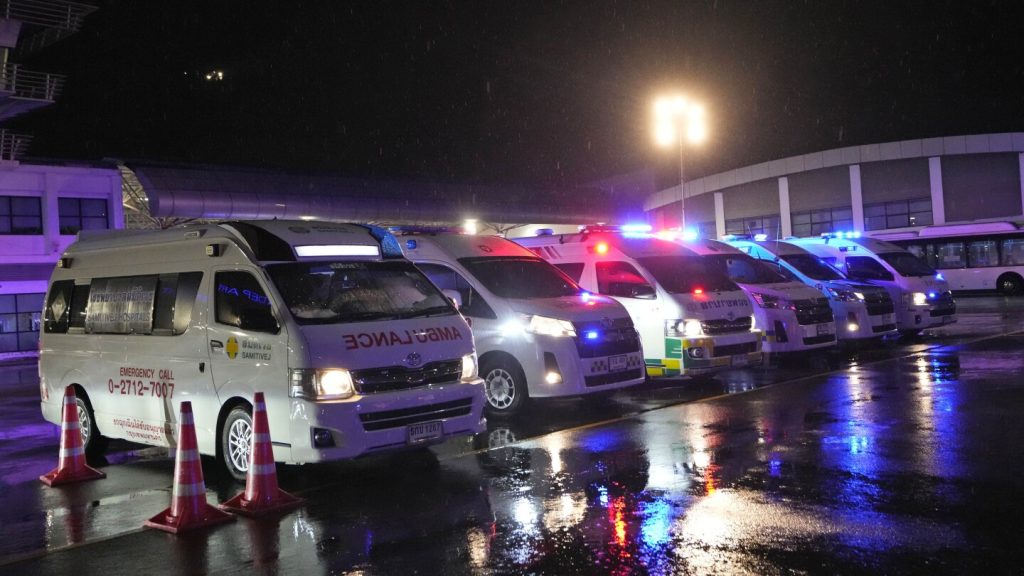A Singapore Airlines flight encountered severe turbulence over the Indian Ocean, causing it to descend 6,000 feet in about three minutes. The incident resulted in the death of a British man and injuries to dozens of passengers, some severely. The Boeing 777 flight from London to Singapore was forced to divert and land in stormy weather in Bangkok. Passengers on board reported that crew members were also injured during the turbulence, with one crew member suffering from a bad back and others sustaining gashes on their heads.
Passenger accounts revealed that some individuals hit their heads on the overhead baggage compartments during the turbulence, causing damage to the cabin interior. The sudden descent occurred as passengers were being served food on the flight. Seven passengers were severely injured, while 23 passengers and nine crew members suffered moderate injuries. Further medical assessments were required to confirm whether the British man’s death was due to a heart attack. Upon landing in Bangkok, 71 people were treated at a local hospital, with six of them classified as severely injured.
Tracking data from FlightRadar24 showed the aircraft’s descent from 37,000 feet to 31,000 feet over a brief period while flying over the Andaman Sea near Myanmar. The emergency signal of 7700 was sent during the sharp descent, indicating the severity of the situation. Clear air turbulence, which is not associated with stormy weather, can lead to unexpected and dangerous changes in flight conditions. The aviation industry has been paying closer attention to turbulence-related incidents, especially after a report revealed that turbulence accounted for a significant percentage of accidents on commercial airlines between 2009 and 2018.
Boeing expressed condolences to the family of the deceased passenger and offered support to Singapore Airlines during the aftermath of the incident. The Boeing 777-300ER, the variant of the aircraft involved in the turbulence incident, is widely used by airlines for long-haul flights. Singapore Airlines operates a fleet of these planes and is majority owned by the Singaporean government. In response to the situation, Singapore dispatched another aircraft to transport passengers who were able to continue their journey. Various government agencies and airline officials are providing support to affected passengers and their families.
Thailand’s transport minister announced that Singapore would send another plane to transport passengers, reflecting the coordinated efforts between the two countries. Singaporean authorities, including the Transport Safety Investigation Bureau, are working closely with their Thai counterparts to investigate the incident further. The passengers on the flight were of various nationalities, with the majority being from Australia, the United Kingdom, and Singapore. The airline is continuing to provide updates on the situation as investigations progress. The aviation industry is emphasizing the importance of safety measures to prevent similar incidents in the future.


